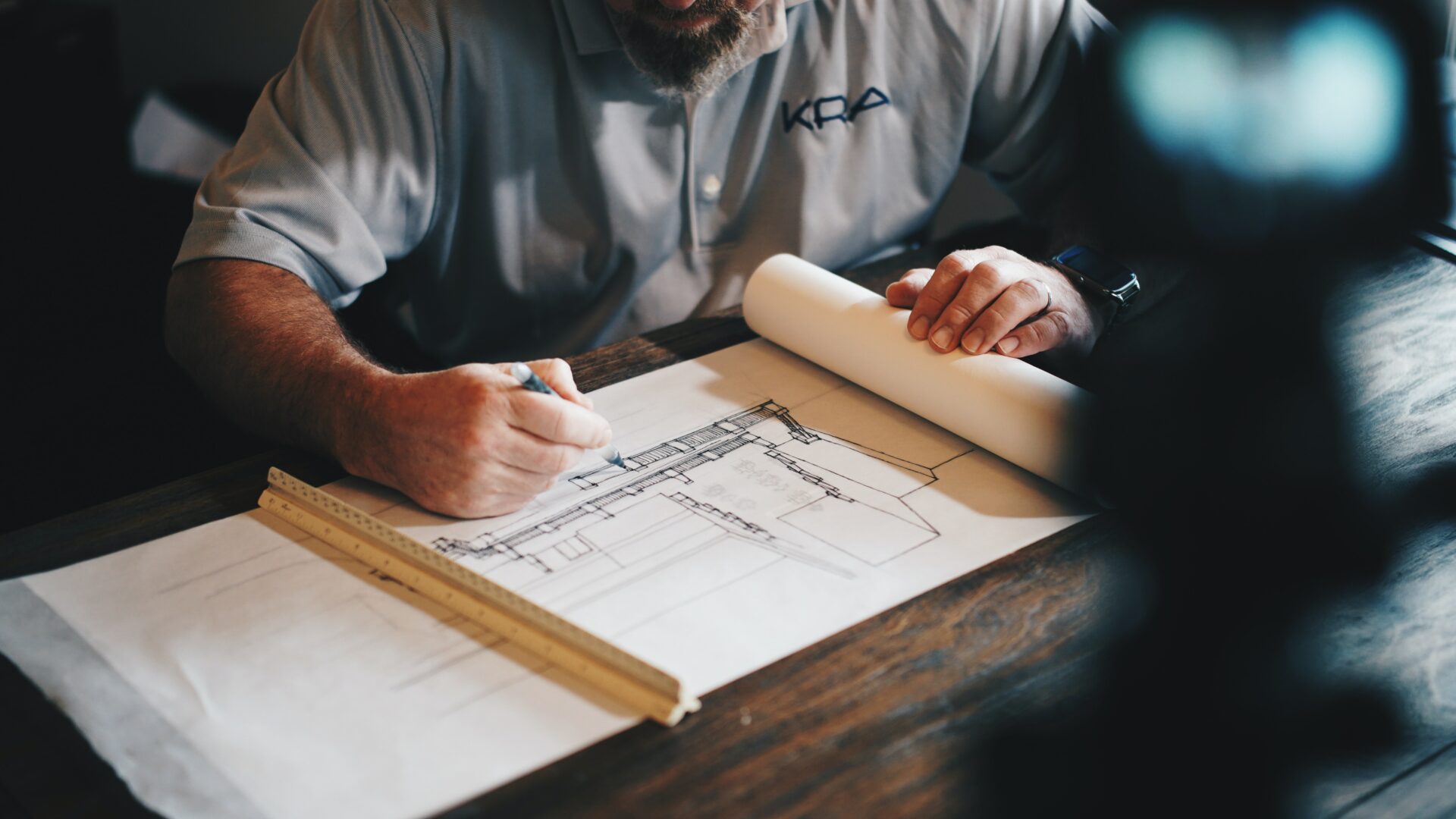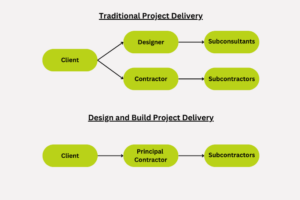
11 January 2024
What Is Design And Build In Construction?
Posted on January 11, 2024 by edenlondon. Last Updated on January 11, 2024
Recent years have seen design and build emerge as a transformative project management approach in the construction industry. Nowhere is this more evident than in the UK, where design and build adoption has increased to more than 43% compared to other construction procurement methods.
It’s important that industry professionals as well as those interested in securing construction services understand the ins and outs of design and build. To help, we’ve drawn upon our years of industry experience to simply and clearly explain the following:
- What is design and build?
- How is design and build different from the traditional procurement method?
- What are the benefits of design and build?
- Finding the right design and build contractor
Let’s get started.

What is design and build?
Design and build is also known as D-B or the design-build method. It is a type of construction project delivery method that involves designers and builders working together from the very start of a project under a single contract. This allows for a streamlined, collaborative, and unified approach.
Typically, with a design and build method the client is in touch with a single party – the principal contractor. It is the principal contractor’s responsibility to coordinate their team of designers and subcontractors and ensure they are working together to deliver a project that meets the client’s expectations and requirements.
Design and build is suitable for various types of construction projects, from residential to commercial.
How is design and build different from the traditional procurement method?
The traditional procurement method, also known as D-B-B or traditional Design-Bid-Build, requires a client to manage two or more separate contracts – one with a designer and one with a builder. The former may be an architectural design firm or an interior designer, while the latter could be a build firm with contractors and subcontractors. Because there are separate contracts, the client is responsible for coordinating with the designer and the contractor and subcontractors, keeping them informed of updates or changes, and resolving any issues that may arise between them.
A design and build contract, by contrast, eliminates the need for multiple contracts and promotes a more cohesive and integrated project delivery. The client manages a single contract with a principal contractor, who is responsible for the design phase and the construction phase and seeing the project through from start to finish. It’s a convenient end-to-end solution.

What are the benefits of design and build?
There are many benefits to a design and build service, chief of which are:
- Greater cost certainty: Recent research indicates the design and build procurement route improves the overall cost performance of construction projects. The early involvement of the construction team during the design phase can help identify issues and formulate cost-effective solutions. That’s not to suggest cost-overruns don’t happen, but rather, that this method has greater potential for cost savings than the traditional procurement method.
- Streamlined project management: Since this approach involves all team members working together under a single contract, there’s greater scope for collaboration and innovation. Furthermore, the principal contractor serves as a single point of contact and single point of responsibility. This means better coordination, with the client and project team kept up-to-date of the latest developments. It also means better communication, as the client can easily convey concerns or request changes.
- The entire project is completed faster: Because design and build requires a single contract, there is no need for multiple bids – by designers and by builders – which means the project can begin faster than it would the traditional route.
These are powerfully persuasive advantages. It’s therefore no surprise that publications indicate that in the last decade design and build has fast become the most popular method in the UK for procuring construction projects.
Finding the right design and build contractor
It’s important to know what questions to ask a design and build contractor. This will allow you to determine if they’re the right contractor for the project in mind. Ideally, you want a contractor with the following:
- Experience
- Accreditations
- The knowledge and skills required for work in the project sector
Eden London is a fully accredited principal contractor with years of experience delivering design and build services. Our design and build case studies include work done for Alphasense and The Prince’s Trust.
“ We have worked with Eden London on numerous projects ranging in value over the past 6 years. Their understanding of our needs, alongside their exceptional standard of finish and motivation to achieve amazing built environments for us as an organisation, makes each project we have worked alongside them effortless. Aside from their management of each site, budget and schedule, Eden continue to put The Trust’s needs first and I would not hesitate in recommending them.”
Ben Roman, Head of Property The Prince’s Trust
We work with our clients to understand and meet their needs, and use the latest work management software to plan our projects. We also maintain a centralised hub which clients can access online to view documents, images, and progress reports at any time.
We have a 100% track record for delivering projects on time and on budget, and we maintain a pricing promise. With us, you can rest assured your project will be completed to the highest of standards. If you’re looking for a design and build contractor, then please do get in touch.
